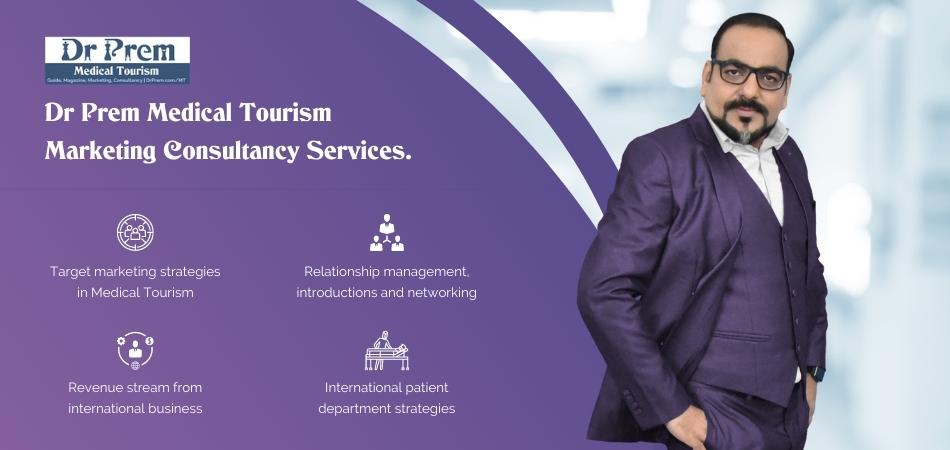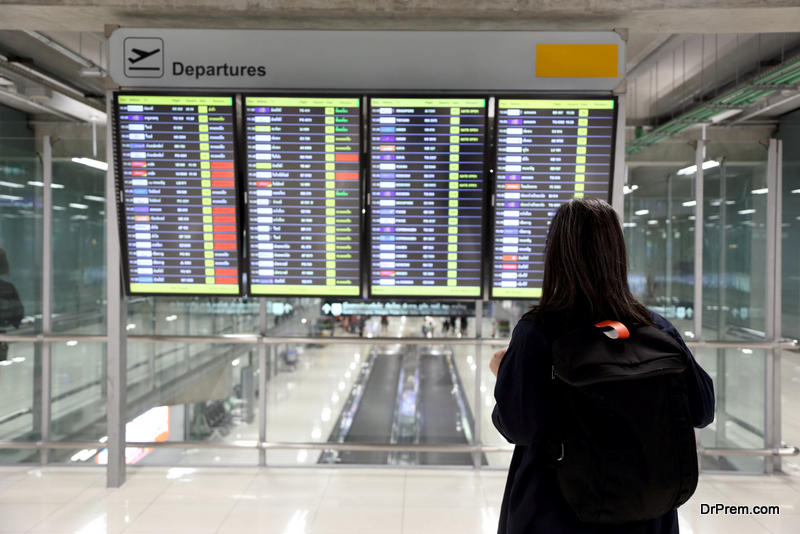A recent report suggests that the number of Canadians leaving the country to receive medical treatment overseas has increased drastically over the past few years. The study noted that over 52,000 Canadians opted for medical treatment in foreign destinations in 2014, a number which is at least 25% higher than the previous year.
The main reason for this rising trend has been attributed to the exceedingly long waiting periods experienced by Canadian patients in the nation’s publicly funded hospitals. It has been estimated that this waiting period can extend to 10 weeks or more after seeing a specialist about a medical problem.
In this medical tourism guide, we will discuss about the following:
Guide to Medical Tourism in Canada – Facts, Trends, News, Services, Research, Business and Updates by Dr Prem
-
Issues related to long waiting periods
-
Medical Tourism in Canada
-
Insufferable waiting time is encouraging Canadians for medical trips
-
Outbound medical tourism is on the rise
-
How the healthcare system of Canada works?
-
The long wait time crisis
-
Canadian patients ditching long queues to get affordable medical treatment abroad
-
The scenario beyond the boundary
-
Survey Reports
-
Why not the other way round?
-
Segmentation of medical tourists
-
Reasons for seeking overseas medical treatment
-
A city wise estimate of the number of Canadians seeking medical treatment abroad in 2014
-
Fraser Institute Reports: In 2016 there were around 63000 Canadian patients who traveled abroad for healthcare solutions
-
Waiting times touching the peak
-
Why the prolonged waiting time?
-
Ray of hope
-
Outbound medical tourism business in Canada to maintain the upward trend
-
Attractions for medical tourists in Canada
Issues related to long waiting periods
In addition to causing emotional distress to the patient, long waits can lead to several health consequences including physical pain, health deterioration, poorer outcomes and longer recovery periods. The costs incurred due to long waits can also force patients to opt for emergency care departments, skipping their specialist or family physician completely.
Rather than face these issues, several Canadians have opted for treatment at a medical facility in a foreign destination with minimal wait periods. Countries like India, Latin America or the U.S are more preferred for their timely care.
While the prospect of getting overnight access to treatments like orthopedic surgery, neurosurgery and plastic surgery in these countries remains the prime reason, getting access to treatments like dental care, plastic surgery and optometry that are not covered by the country’s public system is also one of the main reasons why Canadians are opting to travel overseas for treatments.
Medical Tourism in Canada
Inbound medical tourism in Canada has been on the rise for the past few years. However, the public funding of Canadian medical services has led to several challenges being put forward in this area. Only recently have a few hospitals in the country come forward to openly market their services for international patients.
Although this approach would lead to an additional source of revenue for hospitals that receive limited government funds, it has led to a backlash of sorts with local patients complaining of being displaced in favor of international patients. The potential threat of the rise of a two-tiered system in these hospitals has also led to several objections being raised by Canadians who fear the loss of beds and timely medical care in case this were to happen.
Long waiting periods are forcing more Canadians to travel overseas for timely medical care. Inbound medical tourism in Canada, although on the rise, is also facing several challenges owing to the public funded nature of Canadian medical services.
Insufferable waiting time is encouraging Canadians for medical trips
The Canadian government should be worried about the rising number of patients who are traveling abroad for medical treatments. The Canadian health care system is unable to offer timely medical attention to the rising number of patients. As a result the patients have to wait for months before they get an appointment for medical checkup and then couple of months more before the surgeries.
Patients who require immediate medical facilities cannot wait for 4 to 6 months for getting a surgery. Every year the number of outbound medical tourists is increasing at a staggering rate. Inbound medical tourism business in Canada is considerably behind outbound.
Outbound medical tourism is on the rise
The Canadian patients who need immediate medical attention are flying abroad for getting excellent medical care at lower costs. Medical tourism is a great opportunity for these patients as waiting for treatments in homeland means death for them.
Long waiting time is not the only reason why patients from a developed country like Canada are flying to US, Cost Rica, Singapore, Malaysia and Thailand. There are other reasons like unavailability of certain medical facilities and high costs of many of the special treatments and surgeries. Canadians who are interested in getting cosmetic surgeries are also traveling abroad as such surgeries are not given priority in Canada.
How the healthcare system of Canada works?
The healthcare system of Canada is guided by Canada Health Act 1984. Their healthcare system basically has got a publicly funded structure. Unfortunately, it is the private players who are capable of offering the intricate and complicated medical facilities. Though the basic healthcare is publicly funded but its administration is in the hands of provincial and territorial authorities.
The provincial and territorial authorities follow the guidelines that have been set by the Federal government. The coverage that Canadians get in all the parts of Canada may be same but there is difference in the level of extended care available for residents of different regions. The necessity of medical facilities is increasing as the baby-boomers generation has reached middle ages. Growing number of people are looking for facilities like hip and knee replacement. A huge percentage of the population is suffering from arthritis.
The long wait time crisis
Recently, Wait Time Alliance had commissioned a survey to check what the concerns of Canadians regarding waiting time are and what the actual scenario is. Nanos Research conducted a poll and interviewed around a thousand Canadians to find out what their major concern regarding long waiting time is.
An approximate 64% expressed their worry about the waiting time for meeting a specialist. At present the Canadian patients are plagued by two main problems which are the unavailability of adequate numbers of surgeons and lack of hospital operating rooms.
Patients who need to get plastic surgeries, orthopedic surgeries and neurosurgeries are the ones who have to face the longest waiting times. The survey results of CIHI shows that a patient has to wait for 9 months on average after booking the appointment for knee replacements.
The waiting time for getting hip replacement is around 8 months. Canadians are flocking to India instead of US because the charges of treatments are very low in India yet the services are of superior quality. Most surgeons in India have got western degrees. Among other medical tourism destinations Costa Rica is preferred for dental care treatments and Malaysia is preferred for cosmetic surgeries.
Canadian patients ditching long queues to get affordable medical treatment abroad
Medical tourism is growing in popularity among the Canadians:
The preference for availing medical treatment abroad rather than back home is a rising trend among the Canadians. The main reason behind this is the long waiting time. In fact, the time spent on waiting for a doctor back home and making an appointment with him for fixing up a surgery is longer than the time taken to complete the treatment itself.
Waiting times for hip and knee replacement surgeries are more than 5 months for 19 % to 23 % of the patients. On an average, a Canadian waits 9.8 weeks before fixing an appointment with a doctor. There is a further 8.5 weeks of wait time when the initial doctor refers the patient to a specialist. Consequently, more and more Canadians are opting for overseas medical treatment.
The scenario beyond the boundary:
However, the picture across the country’s boundary line is not always rosy. It might lead to short term benefits, but in the long run one might have to pay a heavy price for this option.
The three U’s of global travel that is untracked, untraced and unregulated slaps a level of caution. A medical treatment abroad might lead to medical complications if you aren’t too sure of the credentials of the clinic. They are smart with surgical instruments and faster in approach, but you only come to know of the clinical disaster after they have completed your treatment.
Complications generally arise for being exposed to antibiotic resistant ailments that is a reasonable threat to the health of Canadians returning home after having getting the overseas treatment. It would be too late as you lose access to the doctors or the clinics for getting a backup solution or a compensation for the health damage sustained. You can’t even sue them considering the huge distance, expenses and the differences in legal systems coming in between.
Survey Reports:
A Frazer institute study report revealed that back in 2014 around 52500 Canadian citizens had been abroad for medical treatment. This is practically a 26 % hike from the trend registered in 2013. However, they returned back to their country with medical complications from surgeries and medical solutions they received overseas. This is certainly very alarming.
A 2014 study further revealed that among 11 selected highly industrialized countries Canada ranked second last. When it comes to waiting time, you wish you were born someplace else other than Canada.
Recently, in Toronto, they had put up a grandstand exhibit called” Destination Health”. It demonstrated a number of featured medical amenities and appliances scattered across the globe that might draw interest of Canadian patients looking for medical treatment abroad. However, since these clinics have methodically eliminated waiting time and focus on fast and efficient surgical procedures, the packages are tagged with a high price. At least here you have an authentic connection that you are back home in one piece without any complications.
Why not the other way round?
The Canadian government and the tourism industry is through a thought provoking exercise that why should the Canadian citizens leave such a beautiful country for seeking medical treatment abroad? Rather it should be the other way round. The dramatic landscapes, snow-clad Rockies, the lush green woods, wildlife, pristine lakes and last but not the least the world class infrastructure are enough to attract tourists from outside.
Segmentation of medical tourists
- An ordinary traveler who goes for a check out to the local doctor while on travel for receiving treatment for minor ailments like a headache or indigestion for example.
- Medical tourists who seek efficient treatment overseas. They have done a lot of exercise back home and have located a dream clinic abroad.
- Medical tourists looking for a rush emergency treatment which their home country fails to provide. If a quick and efficient treatment cannot be procured the patient might die as well. The Canadians unfortunately fall in this 3rd category.
Reasons for seeking overseas medical treatment
— Absence of enough resources and medical facilities in domestic clinics.
–Inclination towards advanced healthcare technology abroad.
–Long waiting time in Canadian clinics.
Quite paradoxically, Canadians leave for medical treatment abroad when in fact foreign nationals from other countries make a beeline before Canadian clinics. The number of Canadian medical tourists is substantial. Also, those who escape abroad incurring heavy expenses to avoid incompetence of the domestic clinical system are in all praise for the system itself. Is it that they have swallowed a bitter pill abroad?
A city wise estimate of the number of Canadians seeking medical treatment abroad in 2014
– British Columbia – 9799.
– Alberta – 5988.
– Saskatchewan – 1050.
– Manitoba – 1048.
– Ontario – 26252.
– Quebec – 6284.
– New Brunswick -742.
– Nova Scotia – 975.
– Newfoundland and Labrador – 327.
– Prince Edward Island – 48.
Whether the Canadians are benefiting or not from foreign medical trips, the plans are quite expensive.
Fraser Institute Reports: In 2016 there were around 63000 Canadian patients who traveled abroad for healthcare solutions
This was almost a 40 % hike in the outbound travel rates of medical patients when compared with the numbers of 2015. The main reason – Long waiting time.
Again around 9500 Canadian patients moved abroad seeking general surgeries and 6400 looked elsewhere for urology treatment where the providers abroad promised low waiting times. Corresponding numbers for angiography and colonoscopy seekers were estimated at 5000.
Fraser Institute surveys also identified the three toppers among Canadian provinces, that experienced the most drain out of patients during 2016:
- Ontario – 26513
- British Columbia – 15372
- Alberta – 9067.
Reports further stated that a number of Canadian patients prefer abroad medical travel riding upon the funds of the Public healthcare system because of lack of availability of the right kind of medical procedures and equipment.
Waiting times touching the peak
Further, reports published by the Canadian Institute for Health information leads to the grim reality it was again the Canadians who were faced with the longest downtimes where around 56 % of the patients waited for more than 4 weeks, where the global average is only 36 %.
Again when it comes to a face to face interview with the patients, around 29 % of the Canadians were forced to hold on for more than 4 hours prior to meeting a healthcare provider during their latest emergency department visits.
As a matter of comparison, if we talk of the international average which stands around 11 %, people from countries other than Canada are way better. Their waiting time is only a third of their Canadian cousins. Only 1 % of the unfortunate crowd is kept waiting for 4 hours or more in other countries among the 11 %. Going by the global waiting time ranking among patients seeking emergency medical services, France tops the list.
According to Tracy Johnson, the director of health systems analysis and emergency issues of the Canadian Institute for Health Information, waiting time issues plaguing a patient in Canada is not at all a novel experience. It was always there. Only thing is that the problem continues and there hasn’t been much effort initiated to resolve this matter of high concern.
Why the prolonged waiting time?
Going by the assessment of the experts the reasons for long waiting times are often complicated and can be attributed to the following facts:
- The burgeoning aging population where an old patient has no other choice than to occupy a hospital bed because nursing home beds are not on deck. Consequently, they block a bed for a long time denying fresh patient entry. Patients’ turnover is way too sluggish.
- Failure of the physicians with a feasible scheduling solution ensuring that no one needs to wait for long.
- Unnecessary tests prolong the waiting times of the patients.
Paradoxically, it is a rather surprising fact that almost 3/4th of the Canadian patients have accepted this unusual delay. In spite of long waiting times, they are in all praise for the domestic clinics opining that quality of medical treatment back home is much better than the international average. Obviously, these confessions are from those who after waiting for long have ultimately been successful in seeing their doctors and had been treated well.
Ray of hope:
However, there is a silver lining behind the cloud of hopelessness for there has been an honest effort from some Canadian healthcare providers who try their best to reduce the waiting time. Evening and weekend healthcare services and extension of group health clinics are among the positive moves in this direction. If there are more service providers then medical tourism business
Another piece of good news from the Saskatchewan, providers over there have been successful in handling the waiting time issues bringing around 90 % of surgeries times to around lesser than three months.
Outbound medical tourism business in Canada to maintain the upward trend:
Keeping other factors in mind contributing to the trend of rising outbound medical tourism in Canada, there is no denying the fact that an explicit correlation exists between Canadian patients preferring foreign health clinics and long wait times back home.
It is envisaged that long waiting time could be arrested by stiffer competition. Healthcare providers would do their best to cut down on patient waiting time and compete with their rivals to hold back the patient exodus that has created a pronounced slump in healthcare market.
For Canada, it is not just the affluent who choose a healthcare solution abroad. There are a lot more people though not so well off but are still ready to spend their hard earned money on a foreign healthcare plan.
In spite of the caution notes issued by the Canadian government warning patients against availing medical treatment abroad, it seems not to have any pronounced effect unless the situation improves back home.
Attractions for medical tourists in Canada
Canadian patients are drawn to other countries due to the medical tourism marketing campaigns by medical tourism facilitator companies or by healthcare facilities located abroad. Patients seek out treatments mainly for dental work, plastic surgery, stem cell treatments, fertility treatments, neuro and cardiac surgery, and pediatrics.
Patients from Canada arrange for treatment abroad on their own or with the help of medical tourism facilitator companies. Many patients who travel abroad are getting in debt as they have to pay for the medical treatments themselves, as well as travel, accommodation and other expenses.
In 2017, the Canadian health care wait times were the highest in more than 20 years. The average waiting time was about 21.2 weeks between the referral and necessary treatment. Canada places at the bottom of the list when its wait times are compared to Germany and Switzerland, both countries which also have universal health care.
In the year 2020, according to Statista, 1.2% Canadian patients received treatment outside the country. The most sought after treatments were in orthopedic and urology specialties.
As the pandemic slowly reduces, and travel becomes normal, more patients out of choice or desperation will seek healthcare outside Canada unless the waiting period is reduced within the country.
















